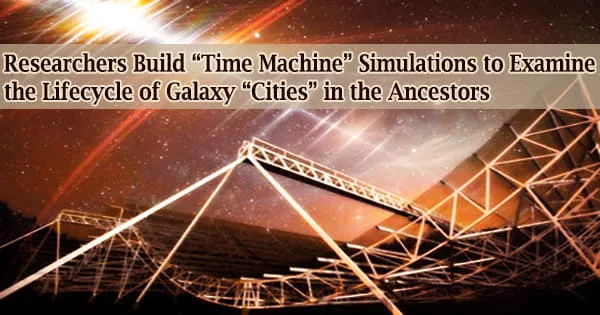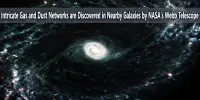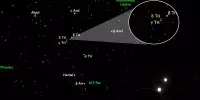According to a recent study published in Nature Astronomy, for the first time, scientists have developed simulations that accurately depict the whole life cycle of some of the largest collections of galaxies that were discovered in the distant universe 11 billion years ago.
Cosmological simulations are essential for understanding how the universe evolved into its current form, yet many of them frequently disagree with what astronomers see via telescopes. Most models just attempt to statistically approximate the real universe.
Contrarily, constrained cosmological simulations are made to closely resemble the cosmic structures we actually see. The majority of these models, however, have only ever been used for observations of the nearby or “local” (i.e., close to Earth) cosmos.
Metin Ata, first author and project researcher at the Kavli Institute for the Physics and Mathematics of the Universe, and Khee-Gan Lee, project assistant professor, led a group of researchers who were interested in far-off structures like massive galaxy protoclusters, which are the forerunners of modern galaxy clusters before they could clump under their own gravity.
They discovered that present investigations of distant protoclusters were occasionally overly simplistic, meaning they were carried out using straightforward models as opposed to simulations.
“We wanted to try developing a full simulation of the real distant universe to see how structures started out and how they ended,” said Ata.
This is something that is very important for the fate of those structures whether they are isolated or associated with a bigger structure. If you don’t take the environment into account, then you get completely different answers. We were able to take the large scale environment into account consistently, because we have a full simulation, and that’s why our prediction is more stable.
Metin Ata
Their result was COSTCO (Constrained Simulations of The Cosmos Field).
Lee compared creating the simulation to creating a time machine. The galaxies that telescopes detect now represent a glimpse of the past because light from the distant universe is only now reaching Earth.
“It’s like finding an old black-and-white picture of your grandfather and creating a video of his life,” he said.
To explore how galaxy clusters would form, the researchers gathered photos of “young” grandparent galaxies throughout the universe and then quickly advanced their ages.
11 billion light-years separated us from the galaxies whose light the astronomers used. The biggest challenge was taking into account the large-scale environment.
“This is something that is very important for the fate of those structures whether they are isolated or associated with a bigger structure. If you don’t take the environment into account, then you get completely different answers. We were able to take the large scale environment into account consistently, because we have a full simulation, and that’s why our prediction is more stable,” said Ata.
The researchers developed these simulations in part to evaluate the cosmological standard model, which describes the mechanics of the universe.
Researchers may be able to spot gaps in our current understanding of the cosmos by foreseeing the final mass and distribution of objects in a particular location.
The researchers were able to confirm three previously reported galaxy protoclusters and disapprove of one configuration using their simulations. In addition, they discovered five more structures that appeared often in their simulations.
This includes the Hyperion proto-supercluster, which will collapse into a massive 300 million light-year filament. It is the largest and oldest proto-supercluster known to exist today and has 5000 times the mass of the Milky Way.
Their work has already been utilized in other efforts, such as those looking at the cosmic surroundings of galaxies and the absorption lines of far-off quasars, to mention a couple.
















